Honda have tried to blur the lines between an ADV and a sport bike. We endeavour to seek some clarity.
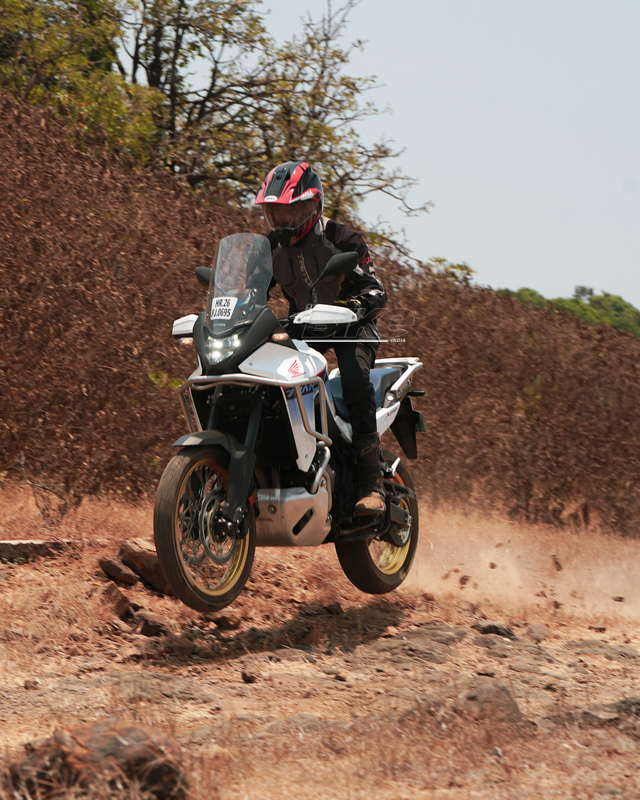
Story: Joshua Varghese
Photography: Apurva Ambep
The Honda Transalp is not a new name. In fact, it is a legend that began life in 1986 as a 583-cc motorcycle. It grew to 647 cc and, finally, to 680 cc in 2008 before it left the scene for a break. Now the Transalp is back and the XL750 is the biggest Transalp yet but, unlike its predecessors, this one does not have a V-twin engine. It is powered by a 755-cc parallel-twin unit from the CB750 Hornet. In some markets these motorcycles are offered alongside each other but we get only the Transalp for now and here is what we have to say about this ADV that sits immediately below the CRF1100L Africa Twin range.
Personally, I find the Transalp a handsome motorcycle. Although I do not think much of the black paint scheme, this white-red-blue combination with golden spoke wheels tugs at the heartstrings. When combined with the 18-inch rear and 21-inch front wheels, the ADV stance is complete and rather tasteful. The quality of parts and fit-and-finish live up to our expectations of Honda. This thing feels like it has been built to last. Some may find the design far too similar to that of the NX500 but the latter is a significantly smaller motorcycle.
The riding position is remarkably comfortable. One sits well within the motorcycle, the seat padding is excellent, and the rider triangle put no stress on me through the day. To be frank, the only exertion I felt was when riding off road and even that was not as tiring as on some smaller ADVs. Although the windscreen is fairly large and wide, it did not save the top of my helmet from wind blast. That could become annoying on long rides. Furthermore, it is not optically perfect because it magnifies the image somewhat when one looks through it. In contrast, the instrument cluster is a colour, digital unit that displays all the essentials at a glance, including the current settings for rider aids. One of the cleanest layouts I have seen yet. Furthermore, there are different layouts to choose from.
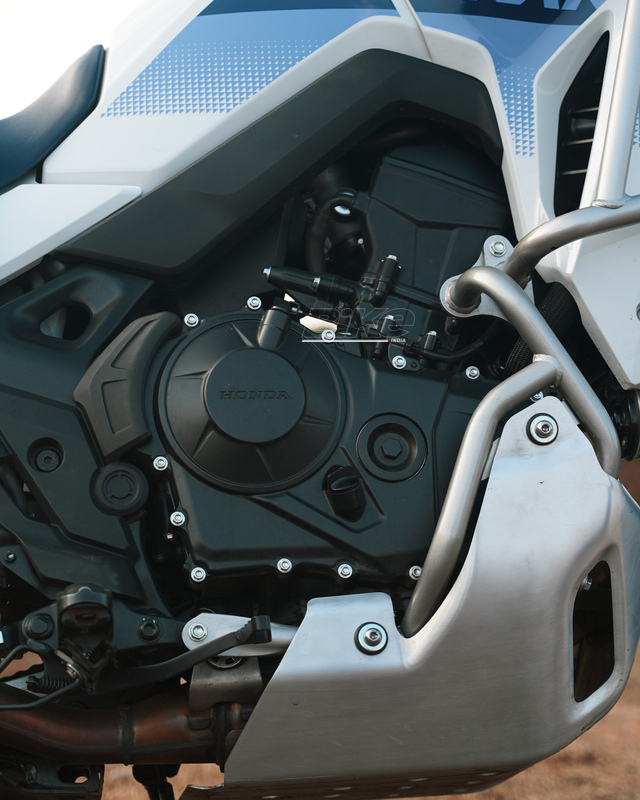
Honda’s choice to jettison the V-twin in favour of a parallel-twin with a 270-degree firing order allows them to offer the benefits of the V-twin in a cost-effective package. The 755-cc, eight-valve, liquid-cooled, parallel-twin engine is one of the stars of the show here and one of the most interesting things about it is that it uses neither an SOHC nor a DOHC; it uses Honda’s Unicam technology that was developed for the CRF450R back in 2002. It is a clever set-up that uses one camshaft for the intake valves while a third lobe on that same shaft is used to actuate a rocker arm for the exhaust valves. Remarkable, is it not? This allows Honda to have a valve-train that combines the benefits of SOHC and DOHC while also being significantly more compact and cost-effective than a DOHC set-up. The only real disadvantage with the Unicam is that it is not great for high-revving applications but that is not an issue for the Transalp whose red-line is at 10,000 rpm.
Power figures are 92 hp at 9,500 rpm and a peak torque of 75 Nm at 7,250 rpm. That may not seem impressive on paper but a ride on this Transalp will change most opinions because of the way it sends that power to the wheel. Ride-by-wire throttle adds another layer of smoothness to its creamy power delivery. In Sport mode, for example, one has access to full power, yet there are no twitches or jerks in the way it is laid down. Each roll-on was predictable and, most importantly, gave me supreme confidence to pick up the pace and enjoy the ride without focusing too much on rider input. It is strongest in the mid-range and that is where it is most enjoyable. In sixth gear, it pulls
away without much drama from as low as 55-60 km/h and that should give you a fair idea about its usability in town.
Beginners and veterans alike will find the Transalp a friendly motorcycle and a supreme definition of the word “machine” because of the way it allows one to do things without being too demanding. The clutch and transmission also were so undemanding and smooth that I barely felt the need for a quick-shifter. This engine should serve as the benchmark in this segment for refinement. The first signs of vibrations reveal themselves only well past the mid-range and even close to the red-line, there is nothing to complain about.
Ride quality is the next best thing about the Transalp. It just soaks in everything in its path to return an impeccable ride almost everywhere. It allows one to carry good pace on broken roads, potholes, and speed-breakers without much worry. I would even go so far as to say that it unlocks a new level of freedom. As someone who enjoys riding sport motorcycles, I find myself having to live with the bad roads that lead up to that perfect stretch of twisties. On the Transalp, the bad roads were barley felt and, upon reaching the roads that snaked along the hillside, it exceeded expectations. Running as it does on Metzeler Karoo Street tyres with a block pattern, honestly I was not expecting much in terms of cornering from this tall motorcycle but it delivered brilliantly. Its neutral handling allows one to ride it almost however one wants to and it just complies. The suspension is non-adjustable and set up on the softer side to return a nice and plush ride. However, that does not stop the Transalp from entering corners as if it is on rails. For a tall ADV, it carries pace through a curve well and only when pushed to the limit does it remind one that it is an ADV and not a sport bike. A more street-oriented tyre could easily push that limit a bit further.
That is something I would not advise because the Transalp is also easy to handle off the road and is fully capable of getting one to some memorable locations without being a pain to handle. Honda’s chassis department have worked their magic to give this motorcycle extraordinary balance and weight distribution. Although nothing of its 208-kilogram weight is felt when the motorcycle is in motion, it is also commendable that it is just as easy to move around.
In the hands of a skilled rider, the Transalp is properly fun off the road. Slides, jumps, and the like come naturally and without too much demand from the rider, thanks to that smooth power delivery. Its generally friendly nature means that even novices will not be overwhelmed when leaving the tarmac with this one. Dual discs at the front and a single rotor at the rear take care of braking duties and experienced riders can even carry the brakes into a corner with confidence. My only grouse is that even in the User riding mode, my traction control settings kept getting reset every time I switched off the motorcycle.
When compared to other motorcycles, the Transalp does not appear to have a character of its own but that’s what makes it so special for me. In a world that tells you what you should do and how you should it, the Transalp strikes me as that quiet and strong friend who listens to you and then helps you do exactly what you feel like. It’s a motorcycle that will support you in all your emotions and I think that’s beautiful.
There are three main reasons why I do not propose to buy one just yet. First, I don’t have Rs 10.99 lakh (ex-showroom) lying around. Second, I’m not altogether happy about paying that much and having to live without the convenience of tubeless tyres and, third, I haven’t ridden the Suzuki V-strom 800DE yet. The last reason could only be a matter of time but there is no gainsaying that Honda have set the bar for usability, handling, and refinement very high. What a machine!
Also Read: Suzuki V-strom 800DE Review

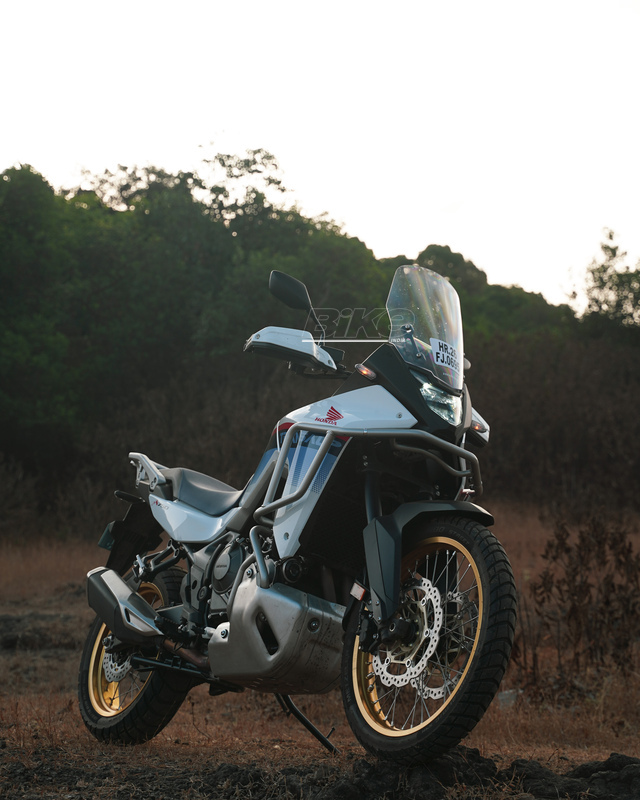
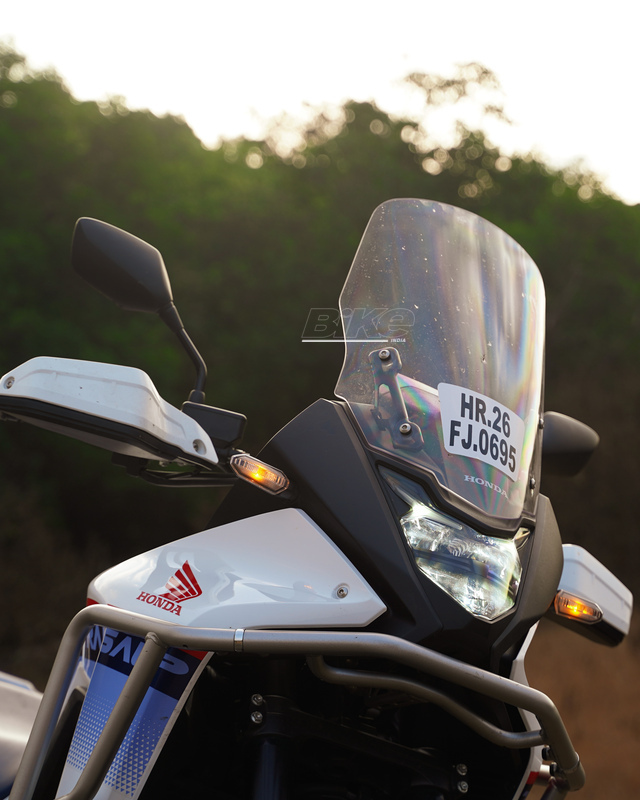

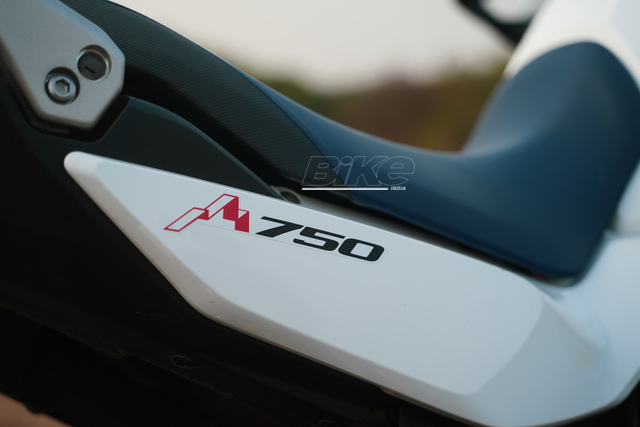
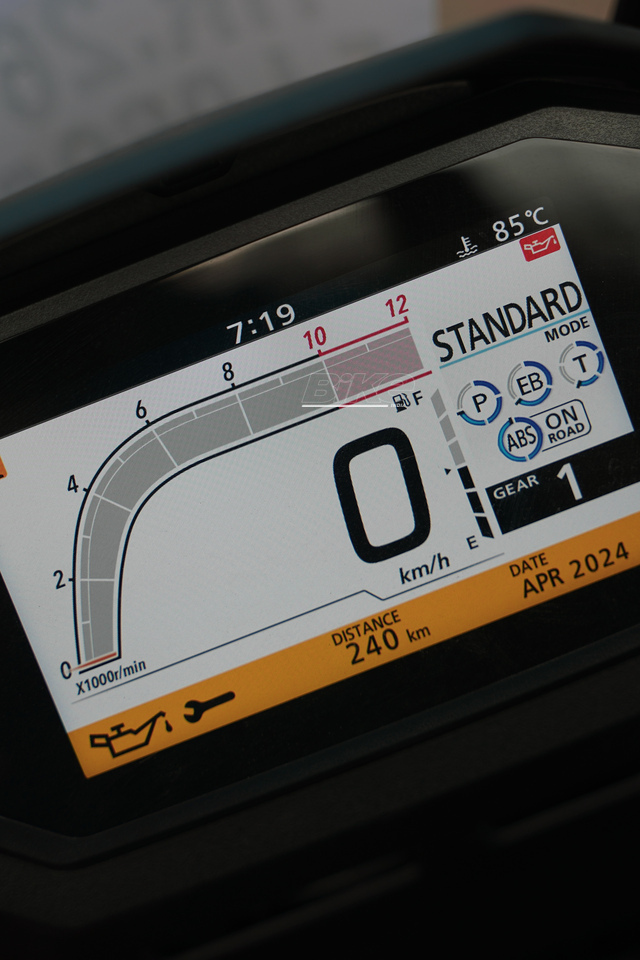

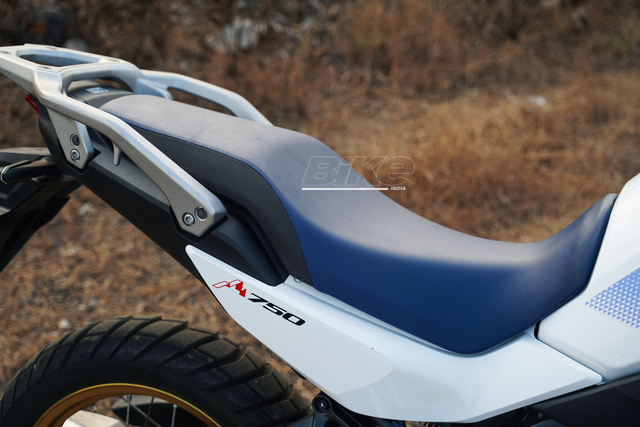
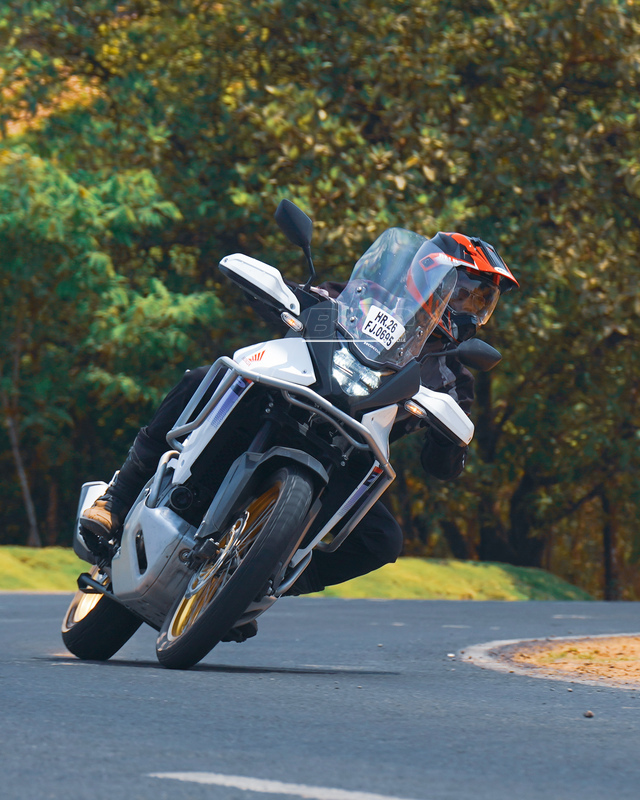
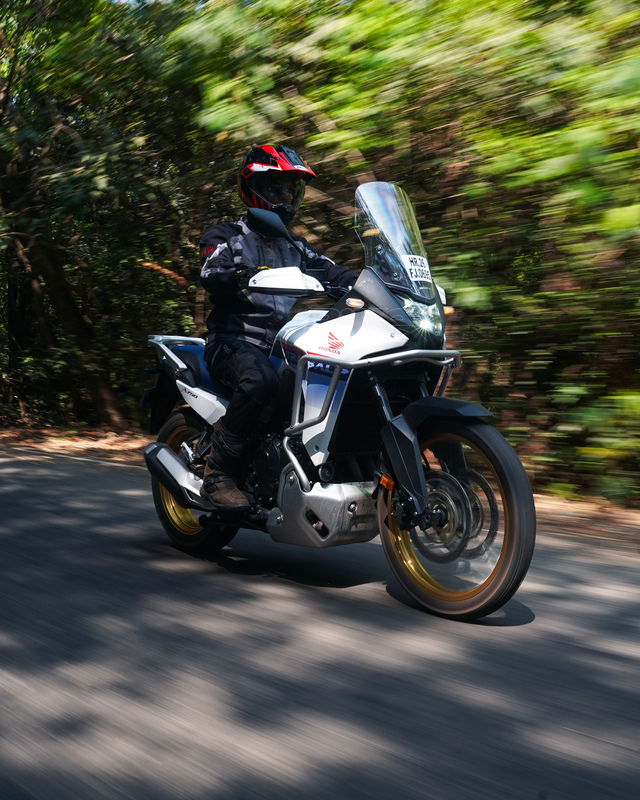
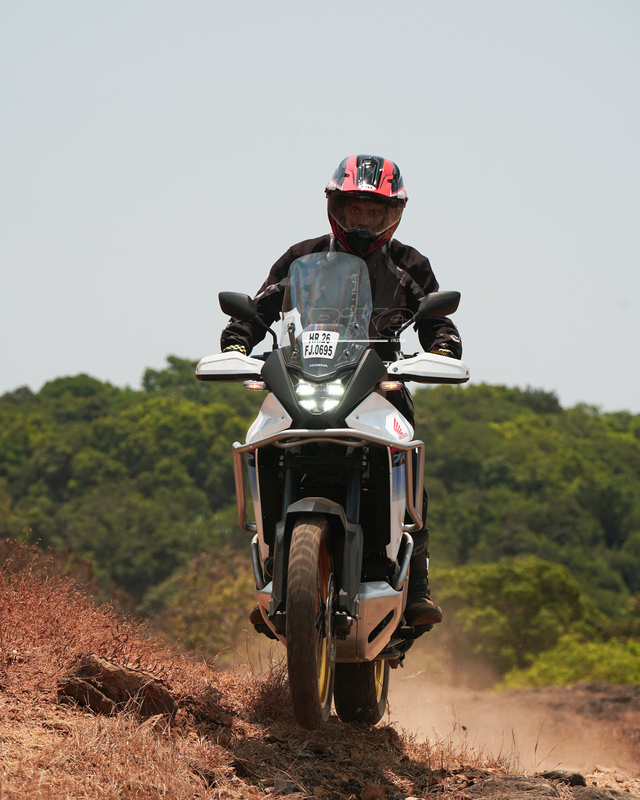
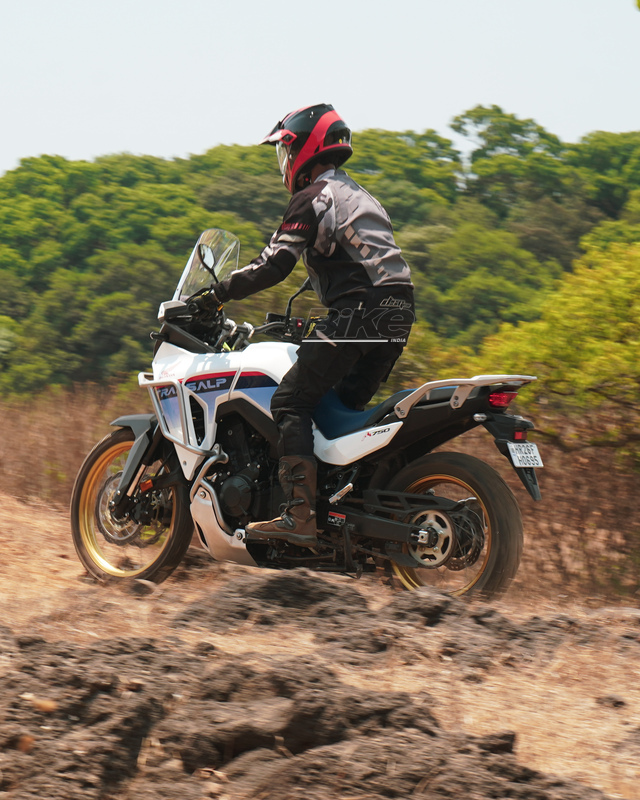
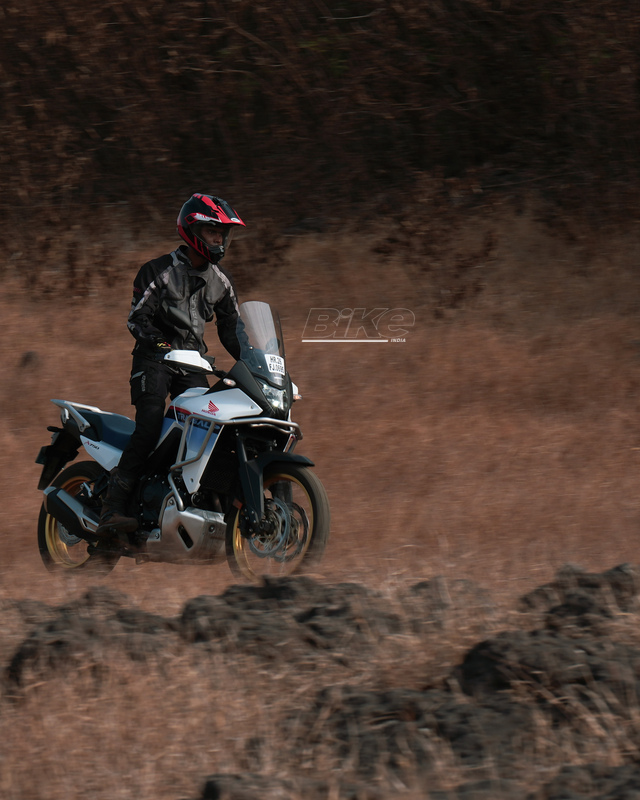
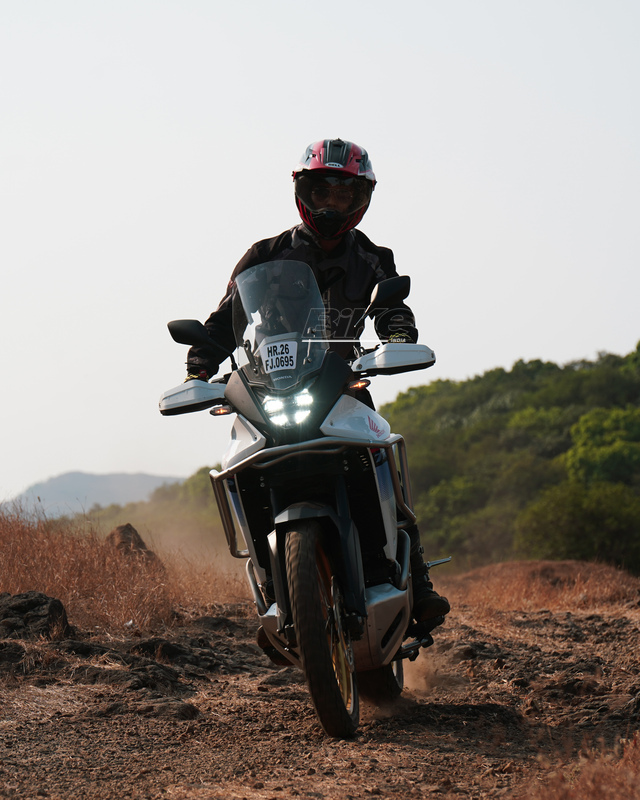




Leave a Reply